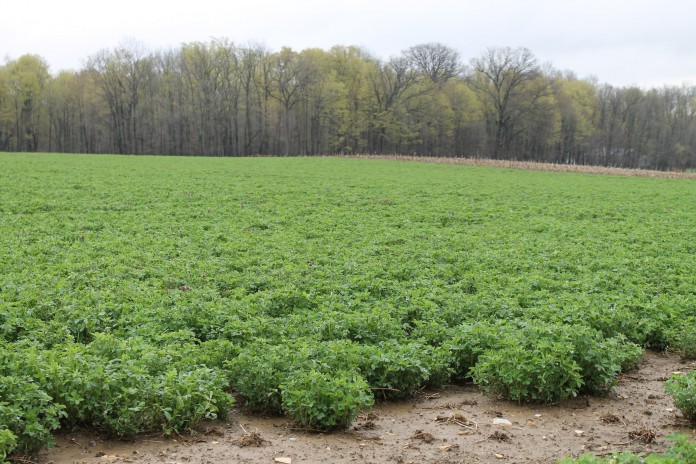WOOSTER, Ohio — Farmers should get a healthy and much-needed dose of spring over the next several days, if the forecast holds up.
The National Weather Service says daytime highs will be in the 70s for Ohio and western Pennsylvania, and lows in the 50s. It’s a significant improvement over March and April, when highs were in the 40s and 50s.
Bret Davis, a crop farmer and Ohio Soybean Association board member from Delaware County, said most of the early tillage in central Ohio appears done. A lot of fields have been sprayed and farmers are just waiting for a little more burndown, before they begin planting.
“Now it’s just waiting to get in the field to get started,” said Davis, who grows about 3,500 acres of corn and soybeans.
Where we stand
As far as planting goes, the whole state is waiting to get started. The latest report from the U.S. Department of Agriculture’s National Agricultural Statistics Service shows just 2 percent of Ohio corn is planted, and just 11 percent in Pennsylvania, as of April 28.
The wheat crop also is behind, although most say it’s still on track. In Ohio, 70 percent of the wheat is in good to excellent condition, and in Pennsylvania 83 is considered good to excellent.
When to plant
Research has shown the best time to plant corn in northern Ohio is April 15 through May 10, known as the “planting window.”
“We encourage planting at the recommended times because this is historically when you get the best yields,” said Peter Thomison, an OSU Extension agronomist, in a released statement. “Planting later than these times historically has resulted in yield loss, in some cases a 30-bushel-per-acre reduction in yield.”
There is still plenty of time to catch the tail-end of the planting window, or exceed it by a few days, if necessary.“I don’t know that guys are really in a panic state yet,” said Fred Pond, a seed salesman from Paulding County. “I think we’ll get a crop in quick.”
David Black, a grain farmer from Franklin County, said not much is happening near the Franklin-Pickaway County region. He estimated as much as 5 percent of the corn might be planted where the soil is more gravely, but for the most part, it’s still too wet.
Yellow spots
He has about 280 acres of wheat planted and was able to topdress it with fertilizer about a month ago, but said the stand is uneven and is showing some yellow spots where the soil is too wet.
He was able to apply some anhydrous ammonia to fields about two weeks ago, but even that was a challenge because so many other farms were doing the same thing — and the equipment was tied up.
“Everybody in the whole countryside was putting it on,” he said.
Jim Noel, a hydrologist with the National Weather Service in Wilmington, said conditions are set to improve.
“The week of April 29 will see above-normal temperatures which will extend into early May,” he wrote in the most recent edition of Ohio State University’s CORN Newsletter. “By mid-May, temperatures will retreat to below normal. He writes the 4-inch soil temperatures are still lagging due to the March weather.
Noel said most data suggests May will see normal or slightly warmer-than-normal temperatures and precipitation will turn back to slightly drier than normal.
Soil moisture is in good conditions across most of the corn and soybean belt in 2013, the exact opposite of 2012. Data continues to suggest a good growing year compared to 2012.
Second March
Further west, the University of Illinois Extension is calling April a “second March,” after cool temperatures persisted through most of April, leaving corn progress in the single digits.
Nationally, only 5 percent of corn has been planted, compared to the five-year average of 31 percent.
Emerson Nafziger, a research professor in the Department of Crop Sciences at University of Illinois, said corn that has been planted is struggling mightily to survive the soil conditions and to emerge.
“If we are lucky enough to ‘skip’ another month and have May look more like a typical June, it’s not too late to get the planting and crop back on track,” he said in a university news release. “So while yield potential will start to drop as we get farther into May with planting, chances of a good corn crop remain high, as long as weather permits planting soon, and then returns to a more normal pattern of rainfall without summer drought periods like we’ve had the past three years in parts of Illinois.”










